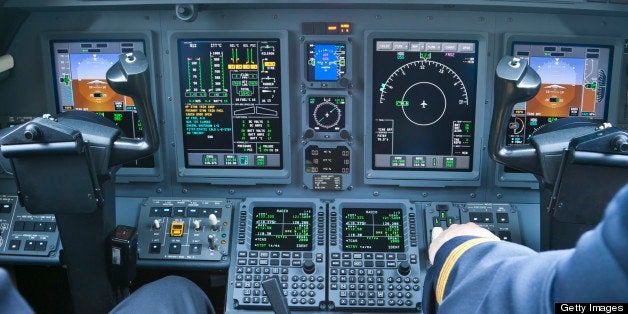
There is an age-old truism that follows any profession. When separated from the passion which spurred a person to it, and seduced by specialization, a person becomes less able to handle anything but the specialty. This knowledge is universal and inherently understood.
Were you in need of a bodyguard and offered two soldiers, one tasked with stateside logistics or a foot soldier fresh from combat, which would you pick? Any reasonable person would take the latter. If your life depended on a boat ride upstream against rapids, would you rather your captain be a fisherman or first mate on a cruise ship? The choice is not difficult.
However, what if you were a passenger on a commercial jetliner that had run out of gas? Given the choice, would you choose the pilot who flies small aircraft on days off or the fighter pilot who learned in jets and flew combat? History shows the small aircraft pilot to be your best bet.
Plagued by the notion flying is a sport of rich kids and playboys, it has suffered from societal mishandling. The typical person no longer views an airplane with excitement or its pilot with envy. Instead, citizens and politicians alike seek endlessly to ground both. This is a problem.
Is flying a small airplane fun? YES. It's amazing. Nevertheless, it also happens to be the best place on Earth for all pilots to learn and practice basic flying skills.
Almost daily, something crosses the wire concerning the loss of basic skills among commercial pilots. When several of the industry's most recent and ominous milestones tracked back to this issue, everyone had something to say. Unfortunately, those prone to hysterics became the guiding light for Congressmen looking to score points.
Emotionally distraught family members grasped at resolution while the pilots of the crash on the Hudson supported solutions founded in myth. Both groups, believing their connection to disaster gave them knowledge, spoke freely about something they did not fully understand. This would lead to a bill reflecting the overreaction of trauma and folly of fame.
As any aviation enthusiast can tell you, the number of hours logged by a pilot is a poor way to judge skill. The growth of ability in aviators focused on the airlines slows to a crawl by the time they meet the most basic commercial minimums. Hours flown from there on become less important. How each hour is flown, though, that is critical.
Despite this knowledge, Congress forged ahead to create a bill that flew in the face of it (H.R.3371 - Airline Safety and Pilot Training Improvement Act of 2009). The House, continuing to display 'inside the beltway' ignorance, left the FAA in charge of the rule's final wording. There, additional recklessness would happen.
Requiring pilots to attain an existing and outdated rating, known as the ATP, caused chaos. Based primarily on a specific number of hours flown, military pilots, who rarely have as much flight time as their civilian counterparts, would lose the bias-based advantage they'd enjoyed for decades. Additionally, pilots taught to fly at aviation universities, commonly knowns as a "puppy mills," would be burdened with higher student debt. Therefore, both of these groups received an arbitrary break on the required flight time. Everyone else had to show 1500 hours.
The rule punished aviation's primary source of basic flying skills, general aviation (GA). Pinching an industry already tight on people would not help. The core issue, supposedly addressed by the new rules, accelerated. Stick and rudder skills marched toward extinction.
There was a time when airline pilots frequented general aviation airports. Today, not so much. Gone are the days the pilots of your 747 would fly small planes during days off. It takes ages to earn a good job and seconds to lose it. Therefore, when it comes to employment, aviators are extremely risk averse. Intentional or not, FAA actions preyed on this.
Imagine if a single speeding ticket meant a practical driving test would be required to maintain a license. If you drove a vehicle for a living, you would spend less time behind the wheel on days off. This is how the FAA began its subtle war on pilots in the '90s. The agency began using a tool known as a "709 ride," long reserved for aviators with a pattern of recklessness, for everything.
Soon, bureaucrats were affecting livelihoods for items equal to an incomplete stop at an intersection or sliding off the road in a blizzard. Because pilots are also expensive to train and lose, rumors flew that the unions and airlines alike were discouraging the operation of small aircraft. Within the walls of crew rooms, a single phrase became a depressing statement, "It's not worth it anymore."
Adding insult to injury, the FAA would later rule many forms of general aviation flying, such as instructing new pilots, would count toward the maximum number of commercial hours a 121 (airline) pilot could fly in a year. This further diminished the upkeep of basic flying skills and ran many who taught those skills out of business. Yet, the Feds continued to allow National Guard and military reserve pilots to fly without those hours counting against the limit. The message to general aviation was clear -- The FAA has no positive interest in GA, and, if you fly for a living, you should avoid it.
The FAA took it a step further in the early 2000's. FITS, a program created by the FAA, and pushed heavily on general aviation, actually stated its purpose was to move primary instruction away from the traditional basic flying skills approach toward a situation based method. In other words, their proposal was, in a sense, common core for aviation.
A decade later, many pilots struggle to perform the most basic and critical maneuver, a stall recovery, and the FAA is seeking to understand why. Sadly, the answer lies with the FAA itself.